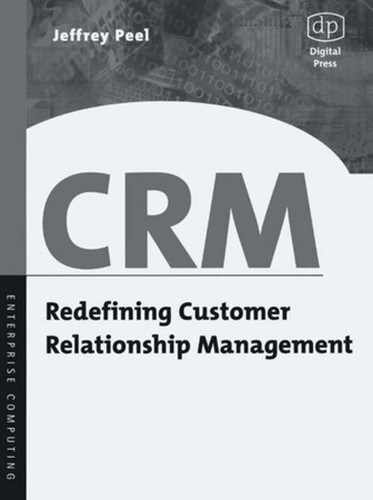
162 10.6 Decision points
10.6
events may indicate a requirement to part company or, more likely, a more
thorough investigation as to the nature of the relationship sought by the cus-
tomer and the potential return from putting such a relationship in place.
Assembling interaction history can be difficult for many organizations;
however, as discussed elsewhere in the book, the ease of achieving interaction
history is greatly enhanced as an array of IP-based contact channels is made
available to customers. Interaction history across channels can easily be
accommodated if integrated application components are used that adopt stan-
dardized formats for recording the nature and categorization of interaction.
A low propensity to engage may indicate a lapsing relationship if it is asso-
ciated with low spending activity. If it is associated with high spending
activity, it may mean that the customer is constantly haggling and renegotiat-
ing, implying some degree of flux.
Analytical applications should be sensitive enough to be able to hazard
guesses about what patterns of customer behavior and spending imply regard-
ing the status of the relationship. Working with a research organization with
skills in assessing consumer behavior patterns may be a good place to start in
defining relationship assessment schemes and diagnostic tools.
Decision points
Assessing the status of relationships when a customer is close to a decision or a
switching point is particularly important. Decision points come about for a
variety of reasons depending on the nature of the brand or service. For certain
types of products or services decision points may come frequently. The objec-
tive for CRM practitioners is to reduce the likelihood of switching outside the
in-house brand portfolio.
Predicting customers' proximity to a switching point is never easy unless,
of course, switching points can be predicted with absolute certainty. This is
obviously the case with car insurance that is renewed annually on a specific
date. In the area of retail baking it's much more difficult to predict. However,
for brand relationships where switching is normally difficult to predict, the
collection of brand adherence or loyalty metrics along the lines described pre-
viously will make the task significantly easier. Well-defined analytics make the
job considerably easier by alerting the brand owner to upcoming, predicted
switching points.
In my view, building the ability into CRM processes to predict--or
instantly alert--brand owners to the likelihood of switching within the overall
..................Content has been hidden....................
You can't read the all page of ebook, please click here login for view all page.
